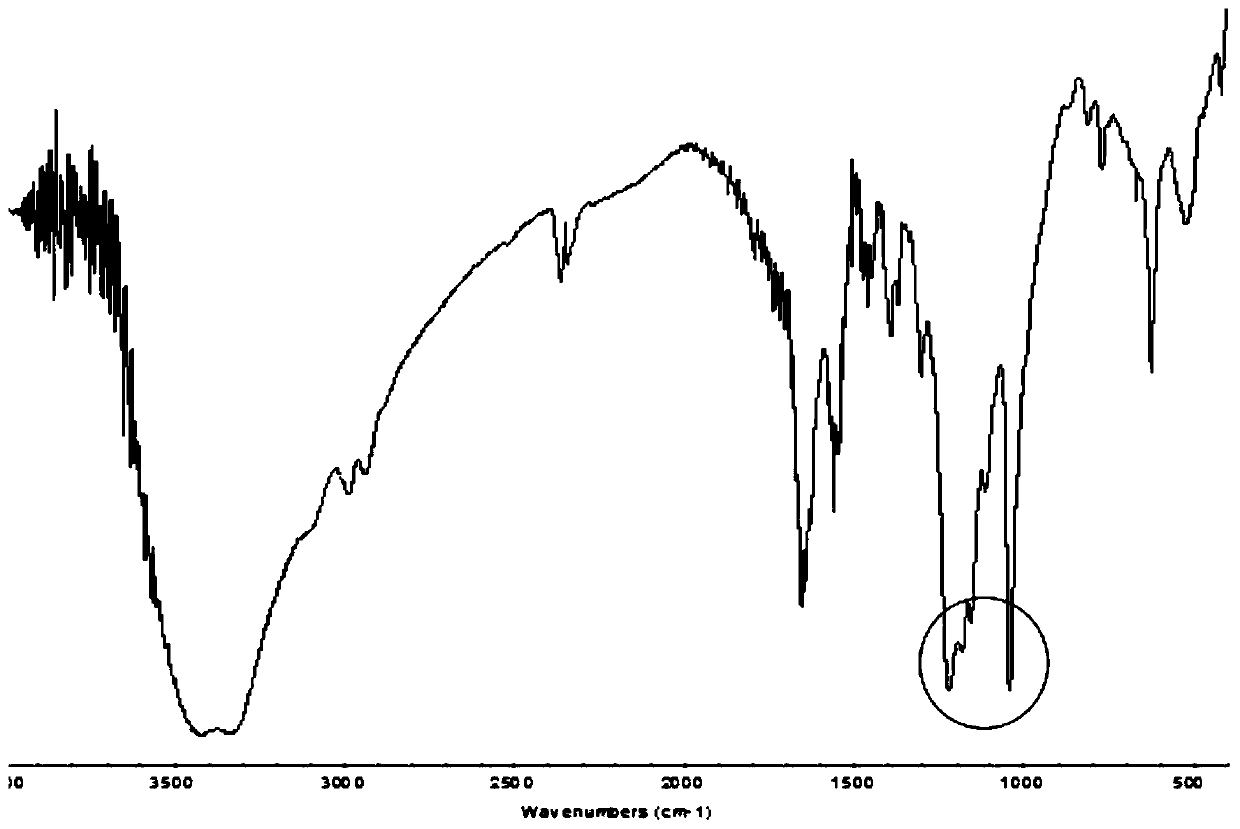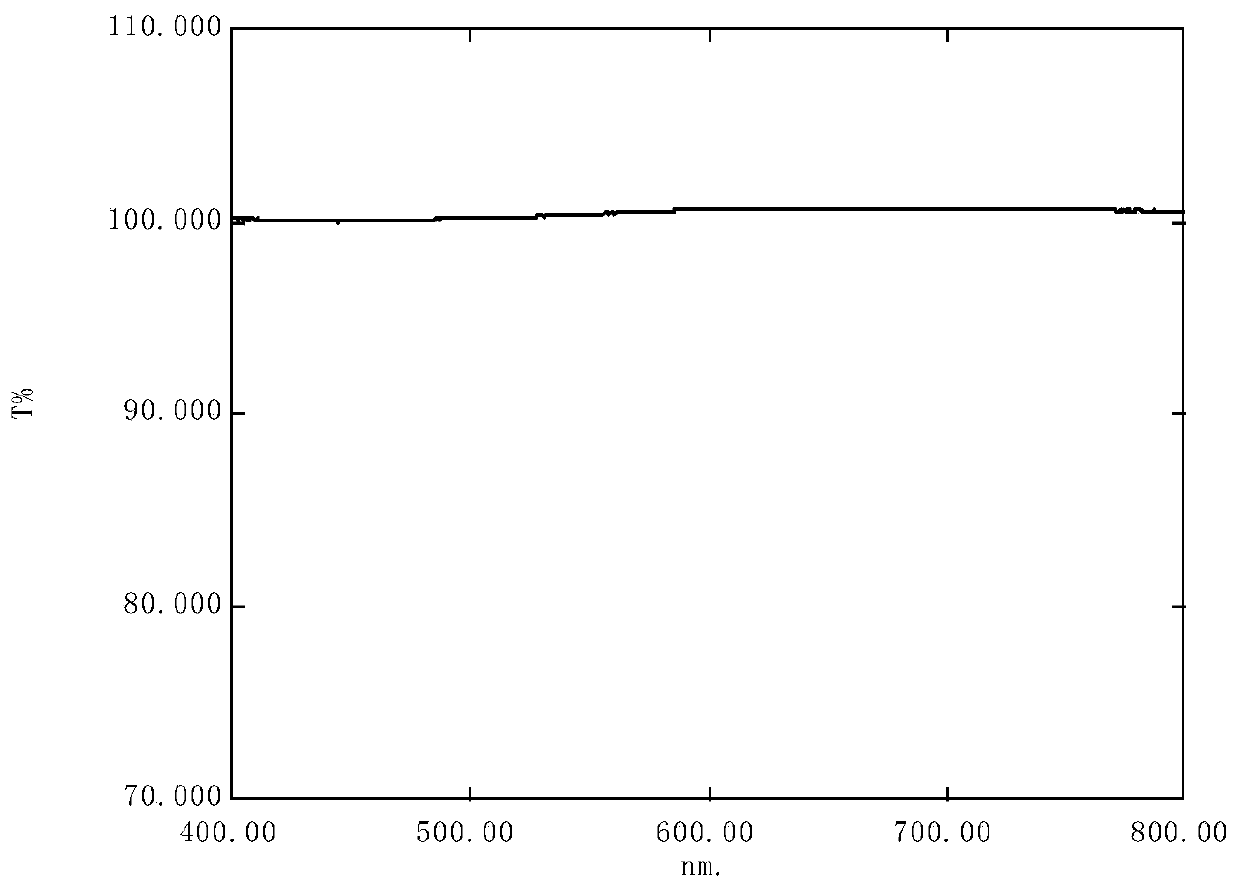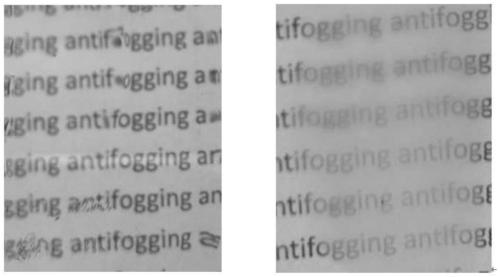Preparation method of hydrophilic polymer anti-fog coating
A hydrophilic polymer and anti-fog coating technology, which is applied in the field of anti-fog coating preparation, can solve problems such as poor adhesion and poor anti-fog durability, and achieve good transparency, long-lasting use and stability, and good The effect of anti-fog effect
- Summary
- Abstract
- Description
- Claims
- Application Information
AI Technical Summary
Problems solved by technology
Method used
Image
Examples
Embodiment 1
[0056] (1) Pretreatment of substrate
[0057] Wash the glass substrate with three equal parts of deionized water, acetone and ethanol respectively, and dry it with nitrogen flow before use. Add 0.1 part of hydrogen peroxide aqueous solution to 20 parts of concentrated sulfuric acid, and the total weight of the solution is 100 g. After mixing evenly, put the base material into it, boil it with water for 0.1 min, take it out, wash it with deionized water, and blow it dry with nitrogen gas for later use.
[0058] (2) Silane coupling agent modified substrate surface
[0059] Dissolve the silane coupling agent in the mixed solvent A to configure a solution with a mass fraction of 0.1 wt%, place the pretreated substrate in the above silane solution, and immerse it at 25°C for 36 hours. Wherein the components in the mixed solvent A are 50 parts of absolute ethanol, 50 parts of deionized water and 0.1 part of acetic acid, and the total weight of the solution is 100 g.
[0060] (3) ...
Embodiment 2
[0064] (1) Pretreatment of substrate
[0065] Wash the glass substrate with three equal parts of deionized water, acetone and ethanol respectively, and dry it with nitrogen flow before use. Add 3 parts of hydrogen peroxide aqueous solution to 1 part of concentrated sulfuric acid, and the total weight of the solution is 100 g. After mixing evenly, put the substrate into it, boil it with water for 10 minutes, take it out, wash it with deionized water, and blow dry it with nitrogen gas for later use.
[0066] (2) Silane coupling agent modified substrate surface
[0067] Dissolve the silane coupling agent in the mixed solvent A to prepare a solution with a mass fraction of 0.5 wt%, place the pretreated substrate in the above silane solution, and immerse it at 27°C for 30 hours. The components in the mixed solvent A are: 45 parts of isopropanol, 45 parts of deionized water and 0.2 part of acetic acid, and the total weight of the solution is 100 g.
[0068] (3) Preparation of hyd...
Embodiment 3
[0073] (1) Pretreatment of substrate
[0074] Wash the glass substrate with three equal parts of deionized water, acetone and ethanol respectively, and dry it with nitrogen flow before use. Add 1 part of hydrogen peroxide aqueous solution to 10 parts of concentrated sulfuric acid, and the total weight of the solution is 100 g. After mixing evenly, put the substrate into it, boil it with water for 20 minutes, take it out, wash it with deionized water, and blow it dry with nitrogen gas for later use.
[0075] (2) Silane coupling agent modified substrate surface
[0076] Dissolve the silane coupling agent in the mixed solvent A, and configure a solution with a mass fraction of 1 wt%, place the pretreated substrate in the above silane solution, and immerse it at 28°C for 24 hours. The components in the mixed solvent A are: 40 parts of absolute ethanol, 40 parts of deionized water and 0.5 part of acetic acid, and the total weight of the solution is 100 g.
[0077] (3) Preparatio...
PUM
| Property | Measurement | Unit |
|---|---|---|
| thickness | aaaaa | aaaaa |
| thickness | aaaaa | aaaaa |
| thickness | aaaaa | aaaaa |
Abstract
Description
Claims
Application Information
 Login to View More
Login to View More - R&D Engineer
- R&D Manager
- IP Professional
- Industry Leading Data Capabilities
- Powerful AI technology
- Patent DNA Extraction
Browse by: Latest US Patents, China's latest patents, Technical Efficacy Thesaurus, Application Domain, Technology Topic, Popular Technical Reports.
© 2024 PatSnap. All rights reserved.Legal|Privacy policy|Modern Slavery Act Transparency Statement|Sitemap|About US| Contact US: help@patsnap.com










